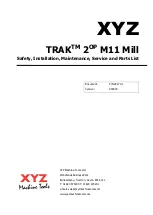
VES-1616F/1624F-44 User’s Guide
66
Chapter 6 Basic Setting
6.4 Introduction to VLANs
A VLAN (Virtual Local Area Network) allows a physical network to be partitioned into
multiple logical networks. Devices on a logical network belong to one group. A device can
belong to more than one group. With VLAN, a device cannot directly talk to or hear from
devices that are not in the same group(s); the traffic must first go through a router.
In MTU (Multi-Tenant Unit) applications, VLAN is vital in providing isolation and security
among the subscribers. When properly configured, VLAN prevents one subscriber from
accessing the network resources of another on the same LAN, thus a user will not see the
printers and hard disks of another user in the same building.
VLAN also increases network performance by limiting broadcasts to a smaller and more
manageable logical broadcast domain. In traditional switched environments, all broadcast
packets go to each and every individual port. With VLAN, all broadcasts are confined to a
specific broadcast domain.
Note:
VLAN is unidirectional; it only governs outgoing traffic.
See
for information on port-based and IEEE 802.1Q tagged VLANs.
6.5 Switch Setup Screen
Click
Basic Setting
and then
Switch Setup
in the navigation panel to display the screen as
shown. The VLAN setup screens change depending on whether you choose
802.1Q
or
Port
Based
in the
VLAN Type
field in this screen. Refer to the chapter on VLAN.
Figure 24
Switch Setup
Summary of Contents for VES-1616F-44
Page 1: ...VES 1616F 1624F 44 VDSL Switch User s Guide Version 3 50 2 2007 Edition 2...
Page 9: ...VES 1616F 1624F 44 User s Guide 8 Customer Support...
Page 23: ...VES 1616F 1624F 44 User s Guide 22 List of Figures...
Page 27: ...VES 1616F 1624F 44 User s Guide 26 List of Tables...
Page 53: ...VES 1616F 1624F 44 User s Guide 52 Chapter 4 The Web Configurator...
Page 63: ...VES 1616F 1624F 44 User s Guide 62 Chapter 5 System Status and Port Statistics...
Page 93: ...VES 1616F 1624F 44 User s Guide 92 Chapter 7 VLAN...
Page 103: ...VES 1616F 1624F 44 User s Guide 102 Chapter 10 Spanning Tree Protocol...
Page 117: ...VES 1616F 1624F 44 User s Guide 116 Chapter 15 Port Authentication...
Page 139: ...VES 1616F 1624F 44 User s Guide 138 Chapter 18 Queuing Method...
Page 145: ...VES 1616F 1624F 44 User s Guide 144 Chapter 19 Classifier...
Page 150: ...VES 1616F 1624F 44 User s Guide Chapter 20 Policy 149 Figure 73 Policy Example...
Page 151: ...VES 1616F 1624F 44 User s Guide 150 Chapter 20 Policy...
Page 157: ...VES 1616F 1624F 44 User s Guide 156 Chapter 21 VLAN Stacking...
Page 165: ...VES 1616F 1624F 44 User s Guide 164 Chapter 22 Multicast...
Page 173: ...VES 1616F 1624F 44 User s Guide 172 Chapter 23 Multicast VLAN Registration...
Page 177: ...VES 1616F 1624F 44 User s Guide 176 Chapter 24 DHCP...
Page 181: ...VES 1616F 1624F 44 User s Guide 180 Chapter 25 Differentiated Services...
Page 182: ...VES 1616F 1624F 44 User s Guide Chapter 25 Differentiated Services 181...
Page 183: ...VES 1616F 1624F 44 User s Guide 182 Chapter 25 Differentiated Services...
Page 193: ...VES 1616F 1624F 44 User s Guide 192 Chapter 27 Maintenance...
Page 195: ...VES 1616F 1624F 44 User s Guide 194 Chapter 28 Diagnostic...
Page 199: ...VES 1616F 1624F 44 User s Guide 198 Chapter 29 Syslog...
Page 259: ...VES 1616F 1624F 44 User s Guide 258 Chapter 33 Command Examples...
Page 267: ...VES 1616F 1624F 44 User s Guide 266 Chapter 34 IEEE 802 1Q Tagged VLAN Commands...
Page 277: ...VES 1616F 1624F 44 User s Guide 276 Chapter 35 Troubleshooting...
Page 281: ...VES 1616F 1624F 44 User s Guide 280 Product Specifications...
















































